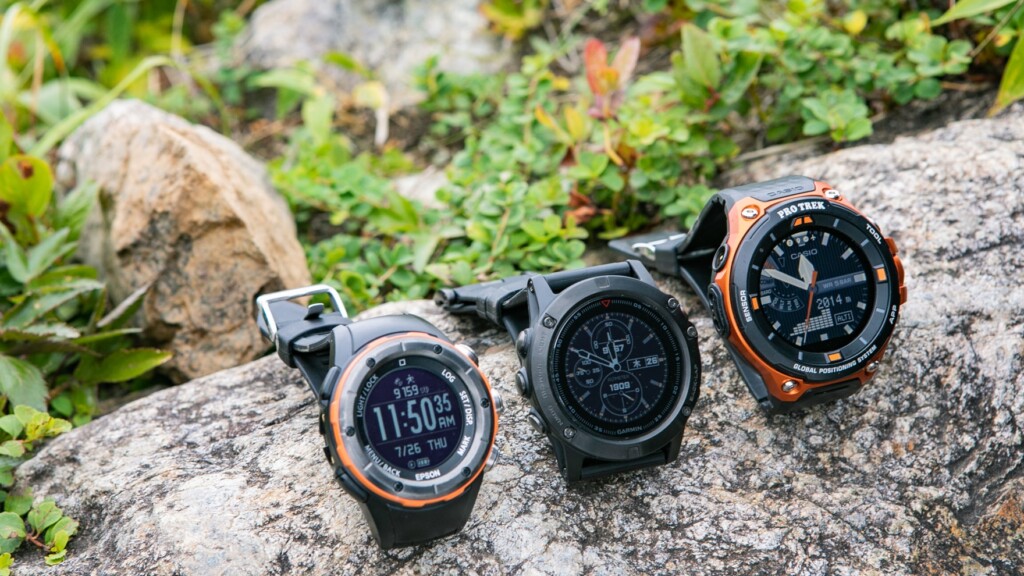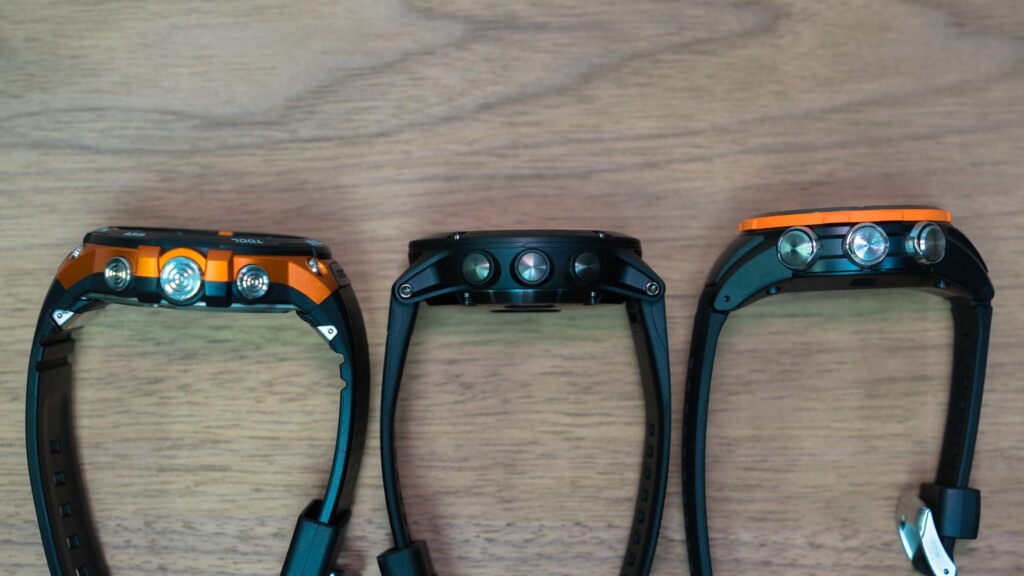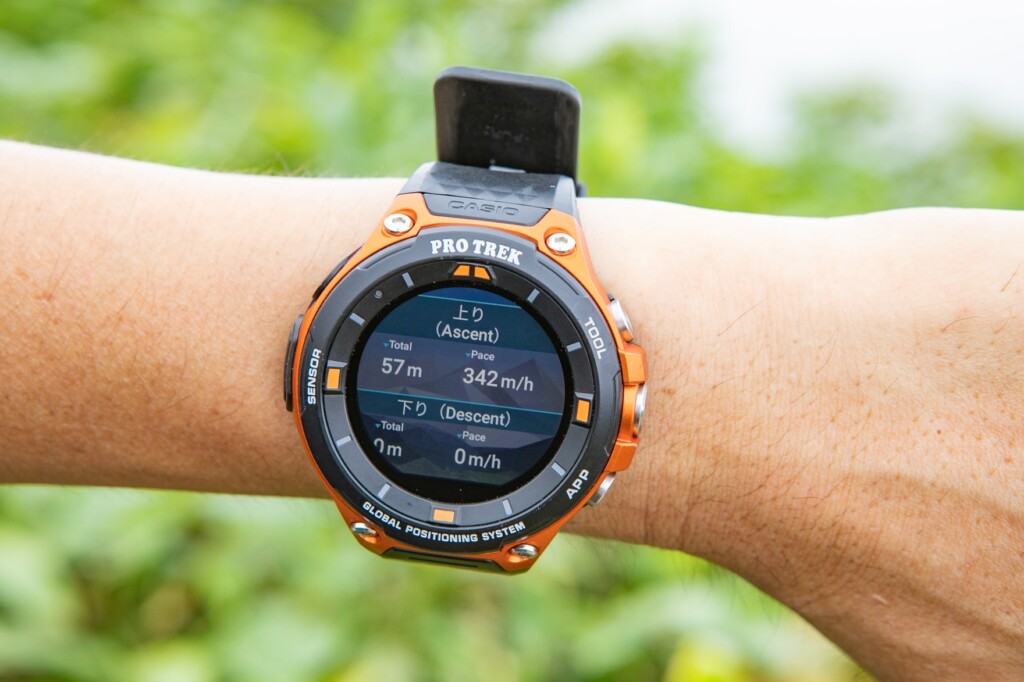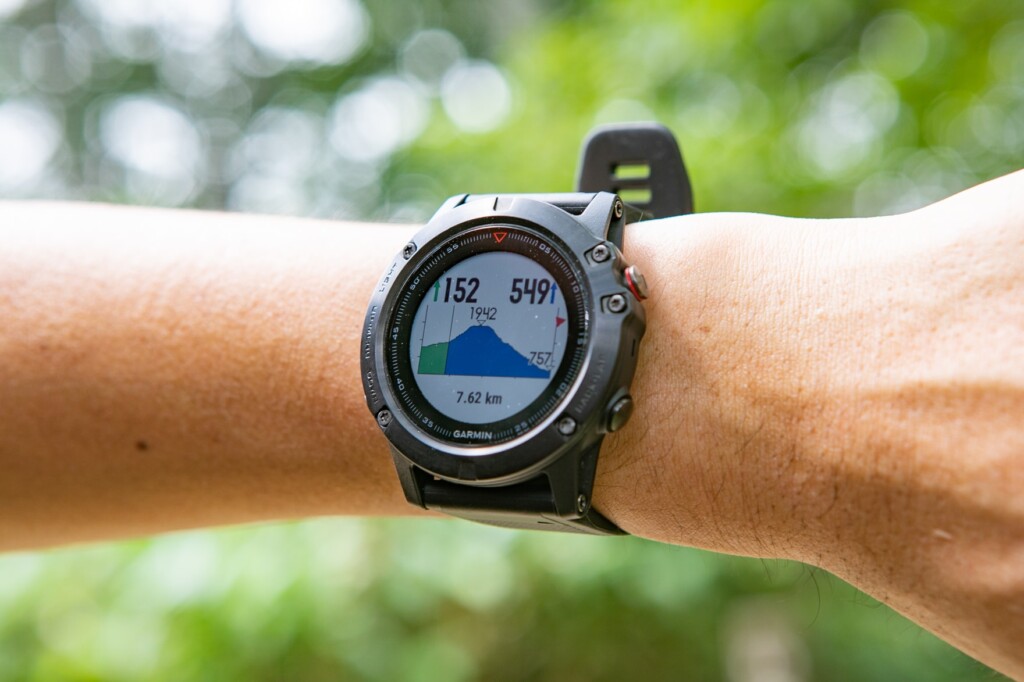
Purchase Guide: After trying out all CASIO, GARMIN, and EPSON, we found out the best solution for outdoor watches with GPS for each purpose [Part 1]
Sports watches with built-in GPS have finally become a booming trend in recent years.
It started with the release of the Apple Watch in 2015. This has led to the rapid expansion of the smartwatch (watch-type wearable devices) market , and at first it was simple enough to record the distance and time of running, but recently it has been steadily evolving as models that allow you to view, record and analyze detailed data tailored to various activities and provide advice. I'm sure many people are now becoming indispensable gear in sports and outdoor fields. I am one of them.
Among these smartwatches, GPS-equipped outdoor watches are useful when climbing where you need to know your current location and sense dangers in the outside world, including weather, and GPS-equipped outdoor watches with ABC (altitude, pressure, direction) functions, and offline map display functions.
This time, we were able to try out three typical GPS outdoor watches at the same time with the cooperation of CASIO. Despite the fact that things are expensive in this field, the actual functions and usability are immeasurable from the outside, so this time we are planning to make this website a perfect boat ride. I'm sure there are many readers who were interested.
When comparing the actual use, there were many strengths and weaknesses that cannot be measured by price differences alone. This time, we will be using it for mountain climbing, and we will thoroughly compare it over two parts, including the good and bad points. Of course, the reviews here are only visible in this trial, but if you're not sure which one to buy, I hope this will help you find out which one is perfect for you.
table of contents
table of contents
- Comparison test items and test environment
- Detailed comparison review
- Summary - What are the recommended types? ~ [Jump to the second part page]
- [Reference] Specifications and Function Comparison Table
About the items we compared and tested this time
This time we have prepared three models that come standard with the minimum ABC functions required for mountain climbing, and can also display routes using GPS and offline maps.
 The first is the PRO TREK Smart WSD-F20 (hereinafter referred to as WSD -F20), an .
The first is the PRO TREK Smart WSD-F20 (hereinafter referred to as WSD -F20), an .
is the fenix 5X Sapphire (hereafter referred to as fenix 5X)  a high-end multi-sport GPS outdoor watch that is proud of by GARMIN, the world's leading brand in the world of portable handheld GPS navigators . Recently, the top model of this model was released, called the fenix 5X Plus. However, there were no changes in basic parts such as music functions and increased battery life, so this time we have used this standard model, which is still on sale, as a comparison model.
a high-end multi-sport GPS outdoor watch that is proud of by GARMIN, the world's leading brand in the world of portable handheld GPS navigators . Recently, the top model of this model was released, called the fenix 5X Plus. However, there were no changes in basic parts such as music functions and increased battery life, so this time we have used this standard model, which is still on sale, as a comparison model.
 Finally, the Wristable GPS for Trek MZ-500 (hereinafter referred to as MZ-500) .
Finally, the Wristable GPS for Trek MZ-500 (hereinafter referred to as MZ-500) .
The three models are introduced as being used for mountain climbing, but due to the subtle differences in their respective concepts, the usability actually varies greatly. It's a good idea to know what each person is doing and what they're doing to avoid regretting their expensive purchases later.
Test environment
The test for the outdoor watch with GPS was conducted for about a month in July 2018, mainly on courses in Okutama and Joshinetsu (comparisons in running mode are postponed). The test was conducted by the author himself and several supporters. I tried out all the features included, such as normal use, app use, and navigation using planned routes, at the same time, at the same time, on the same route, from the start of 100% charging.
Detailed comparison review (Part 1)
1. Exterior: GARMIN with luxury, CASIO with outdoor feel, EPSON with compactness
First, let's compare the appearance of each one.
At first glance, the compactness of the MZ-500 It weighs quite lighter than the other two, and is a size that fits well with my thin arms. On the other hand, the WSD-F20 and fenix 5x look and feel like they're worn. In particular, the WSD-F20 has a large bezel and belt connection part (lug), making it quite visible when worn.

The bezel is noticeable for its small size of Epson and the size of Casio. The Garmin isn't small, but it's just within the acceptable range.
There are some preferences when it comes to design, but for better or worse, the WSD-F20 is typical of PRO TREK, and it is a design that strongly exudes a rough, mechanical impression, and the MZ-500 can be said to be the same lineage. It looks not bad if you push the outdoors to the forefront. On the other hand the fenix 5x is an order of magnitude price range, and the matte stainless steel texture gives off a luxurious feel. Although it's bulky, I feel like this can be worn with a close suit. This is quite important for models that need to be worn at all times to measure their heart rate.
On the other hand, the thickness is almost the same. To be honest, it's "thick." It gets caught every time I carry my backpack. Is there anything I can do about it?
| Item name | CASIO PRO TREK Smart WSD-F20 | GARMIN fenix 5x Sapphire | EPSON Wristable GPS for Trek MZ-500 |
|---|---|---|---|
| weight | Approximately 92g | Approximately 98g | Approximately 67g |
| size | Approx. 61.7 x 57.7 x 15.3 mm | 51.0 x 51.0 x 17.5 mm | Φ47mm t=17.6mm |
2. General screen and ease of viewing of maps - CASIO's LCD display is one of the best
Next, let's compare the screen display. Basically, there is a big difference the WSD-F20 and the fenix 5x , and the MZ-500 In that sense, the MZ-500 is inevitably inferior.
So, what is the difference between Casio and Garmin? To put it simply, the WSD-F20 is clear, bright, and easy to read. The 1.32-inch, 320 x 300 pixel two-layer color TFT LCD has fine resolution and clear text, making it perfect for visibility in the shade and sun. The display is completely unpleasant even for those who are used to looking at smartphones.
On the other hand the fenix 5x has a 1.2 inch, 240 x 240 pixel semi-transparent MIP LCD that contributes greatly to battery savings, but it appears to be a generation old in both the number of colors and the roughness of the characters. However, it is not particularly dissatisfied, but it is just a relative matter.
When it comes to viewing this screen, the most critical response is when displaying a map, one of the highlights of this comparison. Seeing is just a sight to behold, so I displayed the map side by side. We compared the two with the highest brightness and backlighting on.

Casio clearly shows YAMAP's 250,000 map. Garmin's toppo maps are as bright and detailed as possible.
the WSD-F20 (although the screen is small), you can see that you can see it in a way that is almost the same as looking at a map on a smartphone. As someone who has been using Garmin's mobile GPS for many years, the fenix 5x is a familiar one in a sense, but for people who usually live on maps on smartphones, it may seem a bit disappointing. By the way, with regard to Epson, if you set the course in advance on the clock, your current location will be displayed as shown in the photo, but with regard to the map, you cannot do anything more than that, such as checking your current location, including things other than the course.
3. Waterproof and Durability - All of them are highly durable as a smartwatch
Since it is used outdoors, it is useless unless it has a certain level of durability and weather resistance. Here we will compare their durability.
| Item name | CASIO PRO TREK Smart WSD-F20 | GARMIN fenix 5x Sapphire | EPSON Wristable GPS for Trek MZ-500 |
|---|---|---|---|
| Display type | Inorganic glass/capacitive touch panel (supports anti-fouling coating) | Sapphire lenses | Mineral glass (anti-fog treatment) |
| Waterproof | 5 atm | 100m | 10 Atm (100m) |
| Durability | MIL-STD-810G (US military material procurement standard established by the US Department of Defense) and low temperature resistant specification (-10℃) | Operating temperature -20 to 50°C | Operating temperature -20 to 60°C |
About the windshield. the fenix 5x is sapphire glass, which is scratch-resistant and is often used in luxury watches However, when climbing, you will be forced to experience strong impacts that are not commonplace, such as dropping onto hard rocks. Even though it is sapphire glass, it can easily be damaged (tears).
Waterproofing is best for Epson and Garmin's 10 atm (100m) waterproofing. If it is just a splash of water, it's no problem, so don't soak the WSD-F20 in water for long periods of time.
In addition, in terms of overall environmental resistance, the WSD-F20 only passes the durability test MIL-STD-810G specified by the US Department of Defense. It seems safe to use it in a tough way, such as dropping or vibration.




